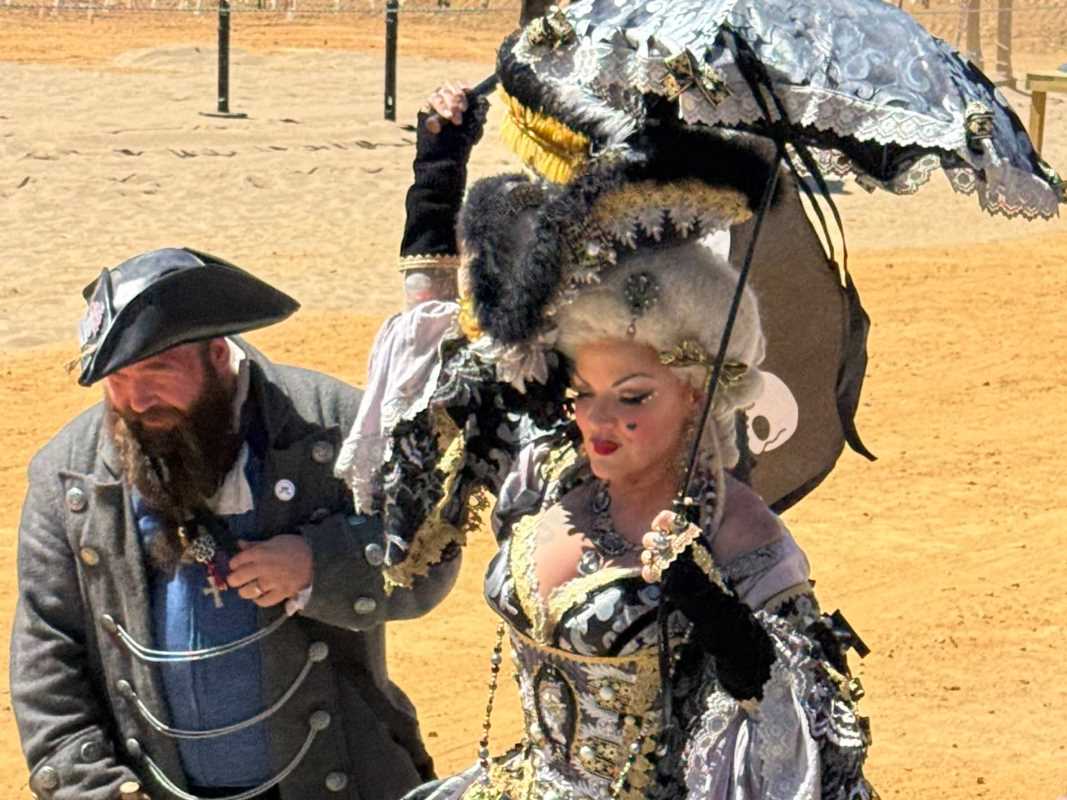Historical reenactments provide a captivating window into the past, allowing participants and audiences to experience history deeply, fully immersive, and tangible. The dedication, research, and artistry required to bring these events to life highlight the profound connection between modern society and its historical roots. From meticulously crafted costumes to the educational opportunities they offer, historical reenactments celebrate culture, memory, and storytelling.
Delving into Costumes and Props
The Importance of Authentic Attire
One of the most striking features of historical reenactments is the commitment to accurate costumes and props. Participants devote countless hours to researching historical records, museum archives, and contemporary art to replicate clothing that is true to the time period they portray. This dedication ensures that:
- Fabrics and Textures: Materials such as wool, linen, and leather are commonly used to replicate the clothing of earlier eras.
- Craftsmanship: Techniques like hand-stitching or dyeing with natural pigments add an extra layer of authenticity.
Examples of Exceptional Attention to Detail
- Civil War Uniforms: Reenactors of the American Civil War often consult military records to ensure that insignias, buttons, and ranks are correctly displayed.
- Medieval Weapons: Artisans craft swords, shields, and armor based on archeological finds, balancing historical accuracy with safety considerations for modern use.
By focusing on these details, reenactors not only honor the historical figures they represent but also create an immersive experience for spectators.
Immersive Historical Settings
Recreating the Past
The setting of a reenactment is as vital as the costumes. Reenactors and organizers strive to replicate historical environments with precision:
- Encampments: For events such as Revolutionary War reenactments, campsites include period-appropriate tents, cooking implements, and even makeshift latrines.
- Battlefields: Historical locations are often chosen for their authenticity, with reenactments held on or near original sites.
The Role of Sensory Details
Immersion extends beyond visual elements:
- Sounds: The clanging of swords, the musket fire crackle, or the marching feet' rhythm transport audiences back in time.
- Smells: Open-fire cooking or the scent of freshly tilled earth adds authenticity to the atmosphere.
These settings allow participants and viewers to feel like they are stepping directly into history.
Attention to Historical Accuracy
Dedication to Realism
Reenactors take their roles seriously, ensuring their behaviors and interactions reflect the period. This includes:
- Language and Dialect: Some participants learn historical speech patterns or adopt regional accents.
- Social Customs: Reenactors follow the societal norms of their era, from gender roles to table manners.
Educating Through Accuracy
By faithfully representing the past, reenactors create opportunities to educate audiences about the complexities of history. For instance:
- Demonstrations: Blacksmithing, weaving, and other historical trades are often showcased.
- Interactive Learning: Audiences can ask questions and gain insights into daily life in different eras.
Educational Opportunities
Bridging the Gap Between Past and Present
Historical reenactments bring history to life in a way that textbooks cannot. For participants, these events are more than performances—they are opportunities to:
- Understand Historical Context: Participants gain a deeper knowledge of the events and cultures they portray.
- Foster Empathy: Walking in the shoes of historical figures helps reenactors and audiences appreciate the challenges and triumphs of the past.
Inspiring Future Historians
Many young spectators leave reenactments inspired to delve deeper into history. Schools and educational institutions often collaborate with reenactment groups to:
- Organize Field Trips: Students can witness history in action, making learning interactive and engaging.
- Host Workshops: Hands-on activities like trying on armor or learning old crafts make history tangible.
Preserving Cultural Heritage
Safeguarding Historical Narratives
Historical reenactments ensure that pivotal moments from the past are remembered and celebrated. By bringing history to life, reenactors help:
- Prevent Historical Amnesia: Significant events, such as battles or cultural milestones, are kept alive for future generations.
- Promote Inclusivity: Some reenactments highlight underrepresented perspectives, shedding light on marginalized communities in history.
Building Community
Reenactments often unite people from diverse backgrounds with a shared passion for history. These events foster:
- Camaraderie: Participants form strong bonds as they work together to create an authentic experience.
- Public Engagement: Spectators are encouraged to engage with history actively, sparking conversations and shared learning.
The Evolution of Historical Reenactments
From Hobby to Profession
What began as a pastime for history enthusiasts has evolved into a structured and professionalized field:
- Professional Reenactors: Some individuals make a career out of historical performance, participating in films, museums, and educational events.
- Corporate Sponsorships: Increasingly, businesses and organizations support reenactments, recognizing their cultural value.
Modern Trends
Contemporary reenactments embrace technology:
- Virtual Reenactments: Online platforms allow wider audiences to experience reenactments remotely.
- Augmented Reality: Apps and devices enhance live events with historical overlays, adding depth to the experience.
Challenges in Historical Reenactments
Balancing Accuracy and Accessibility
While striving for authenticity, reenactors must also consider:
- Practicality: Some historical elements, such as certain materials or customs, may not be feasible in modern settings.
- Inclusivity: Ensuring that reenactments are welcoming to diverse participants and audiences.
Overcoming Stereotypes
Reenactments sometimes face criticism for romanticizing the past. Responsible reenactors address this by:
- Acknowledging Complexity: Presenting balanced portrayals of historical events, including their darker aspects.
- Educating Audiences: Providing context and encouraging critical thinking about history.
Tips for Getting Involved in Historical Reenactments
Joining the world of historical reenactments can be an exciting and rewarding journey. Whether you’re a history enthusiast or someone seeking a unique hobby, becoming part of the reenactment community allows you to connect with the past in a deeply immersive way. Here’s a detailed guide to help you get started:
Choose an Era: Finding Your Historical Niche
The first step in your reenactment journey is to decide which period or culture fascinates you the most. Historical reenactments cover many eras, from ancient civilizations to modern conflicts.
- Reflect on Your Interests: Are you drawn to the grandeur of medieval knights, the strategy of Revolutionary War battles, or the daily life of Victorian society? Choose an era that aligns with your passions and curiosity.
- Research the Era: Dive into books, documentaries, and online resources to learn about the customs, attire, and historical events of your chosen period.
- Consider Accessibility: Some eras may have more active reenactment communities or accessible resources in your region. For example, Civil War reenactments are popular in the United States, while Viking reenactments may have a stronger presence in Northern Europe.
Join a Group: Building Connections and Finding Guidance
Becoming part of a reenactment group or society is crucial in getting involved. These communities welcome newcomers and provide the structure and support you need to start your journey.
- Locate Local Groups: Search for reenactment societies in your area or join online forums dedicated to your chosen era. Social media platforms often have dedicated groups where enthusiasts share resources and event updates.
- Attend Events: Visit local reenactments as a spectator to observe the community in action. This will give you a sense of the group’s dynamics and standards of authenticity.
- Ask Questions: Most reenactors are passionate about their craft and happy to share advice. Don’t hesitate to ask about getting started, acquiring gear, or participating in events.
- Commit to a Role: Many groups assign specific roles to members, such as soldiers, artisans, or civilians. Choose a role that matches your interests and skill set.
Invest in Quality Gear: Building Your Historical Wardrobe
Authenticity is a cornerstone of historical reenactments, and having the right attire and equipment is essential. Start small and gradually expand your collection.
- Start with the Basics: Begin with a simple costume that fits your role. For instance:
- Medieval Reenactments: A tunic, belt, and basic footwear.
- Civil War Reenactments: A basic uniform or civilian attire from the era.
- Prioritize Quality Over Quantity: Invest in well-crafted items that reflect historical accuracy. Look for vendors specializing in reenactment gear or join group buy-ins to access quality materials.
- DIY Options: If you’re on a budget, consider making some of your attire. Many reenactors sew their costumes or craft basic props using historical patterns and guides.
- Expand Your Collection: Over time, add accessories like hats, gloves, weapons, and tools to enhance the authenticity of your portrayal.
Additional Tips for Success
To fully embrace historical reenactments, consider these extra steps:
- Learn Historical Skills: Gain proficiency in activities relevant to your role, such as blacksmithing, cooking, or marching drills.
- Stay Committed to Research: Learn about your era to deepen your understanding and improve your portrayal.
- Network with Enthusiasts: Attend workshops, fairs, and reenactment events to connect with seasoned reenactors and expand your knowledge.
By choosing an era, joining a group, and investing in quality gear, you’ll be well on your way to becoming an active participant in the vibrant world of historical reenactments. This journey brings history to life and offers an opportunity to build friendships, develop skills, and create unforgettable experiences.
Historical reenactments are more than performances—they are dynamic explorations of history that educate, inspire, and connect. Through the dedication and passion of reenactors, these events offer a rich tapestry of cultural narratives that continue to resonate with audiences worldwide. Whether you’re a spectator or a participant, the art of authenticity invites you to step back in time and experience history in a profoundly personal and immersive way.







